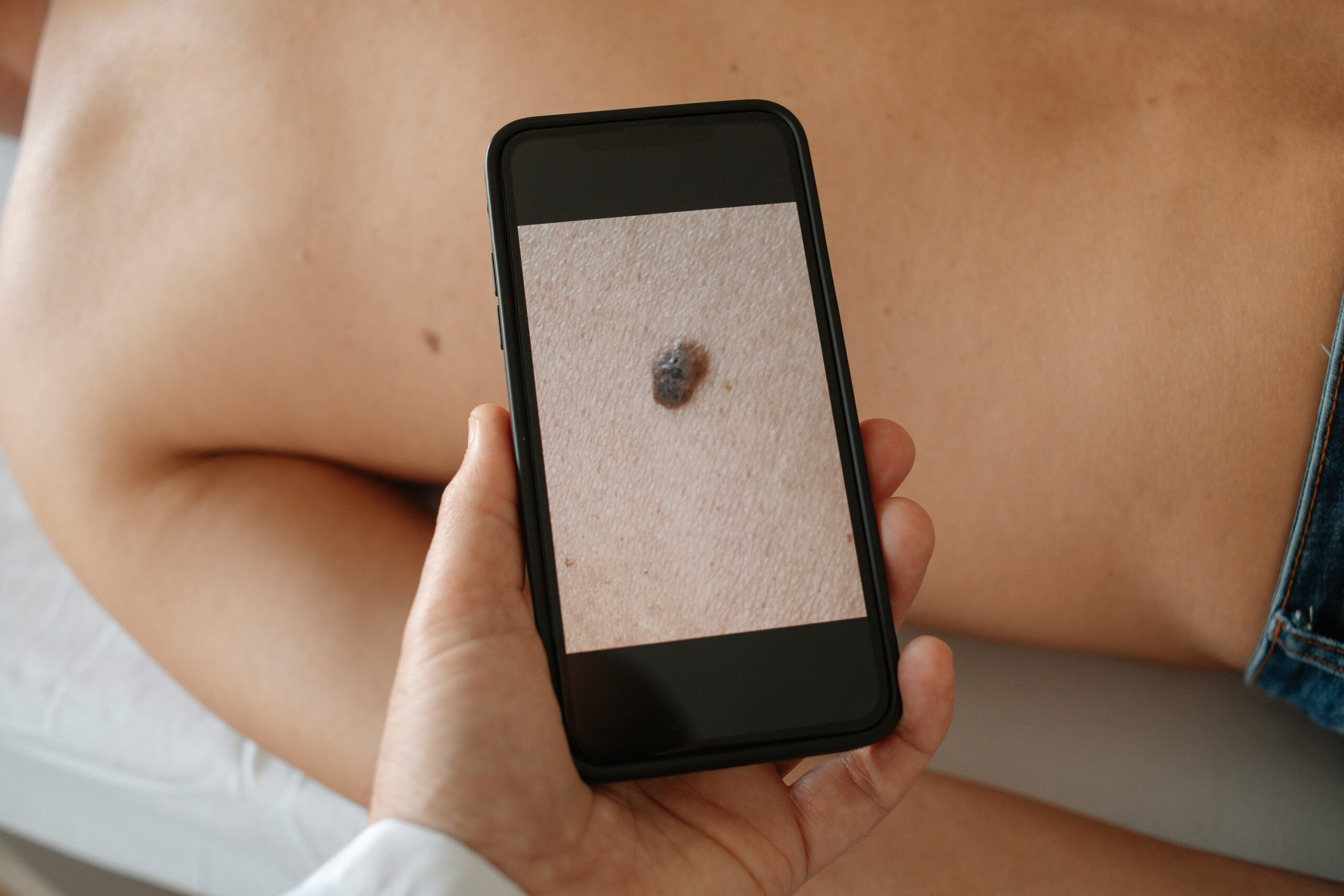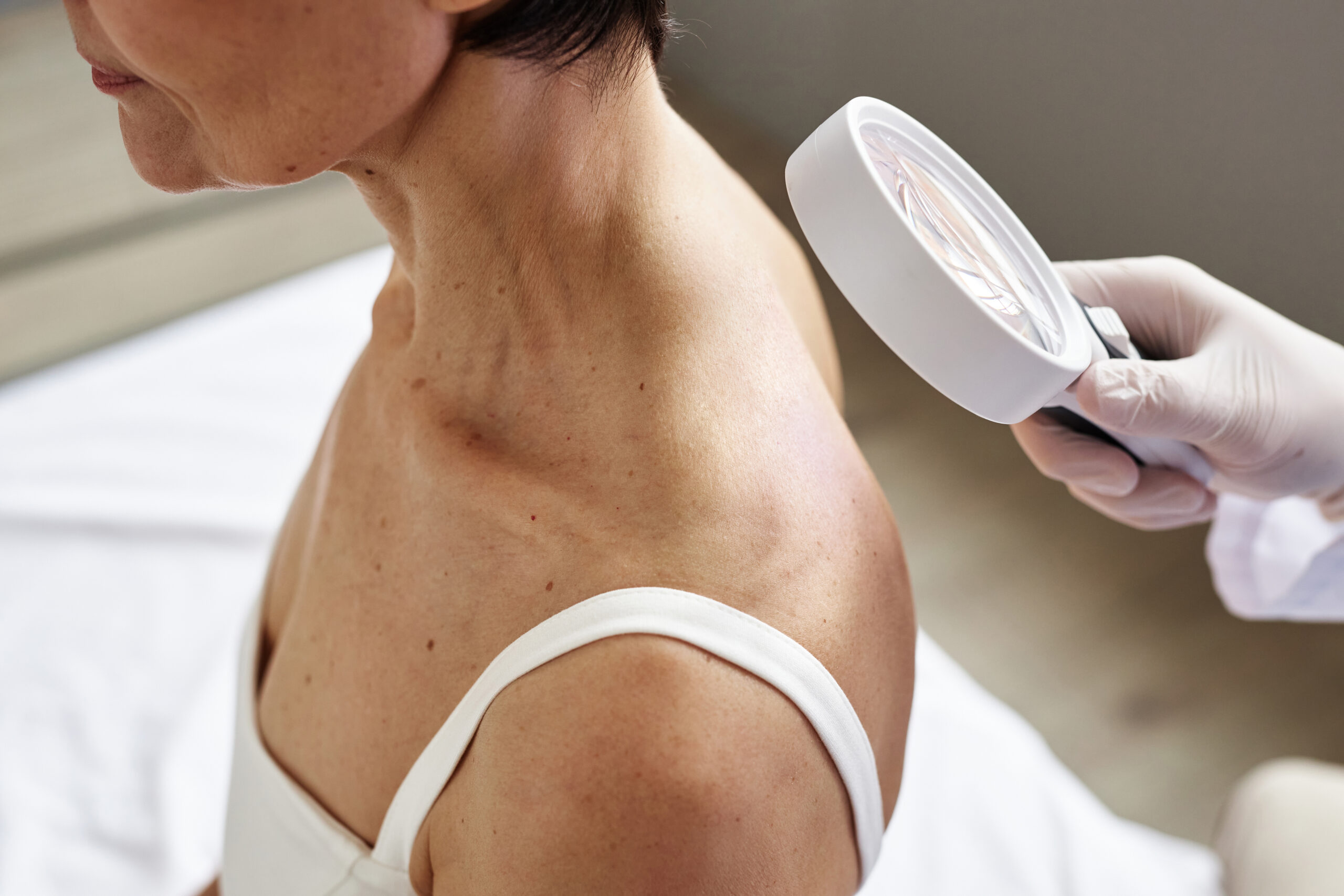
Sunscreen 101: Choosing the Best Sunscreen to Protect Your Skin
This article originally published in Aug. 2021.
Editor’s Note: Just because summer is winding down, doesn’t mean it’s time to put that sunscreen away! Hot temps are expected well after Labor Day. That’s why we’re pleased to feature this article by skin-care expert Carla Trail, who provides dermatology services here at Fast Pace Health. We want you and your family to continue to be protected while enjoying the outdoors! You may just want to save this article to reference year-round!
By Carla Trail, FNP-C
Provider of Dermatology Services
Fast Pace Health
What kind of sunscreens are there? How do I know which one to get?
I get asked these questions many times. Chemical sunscreens and mineral sunscreens have an SPF of 4 to 110. SPF stands for sun protection factor. It is a measurement of how much solar energy, or UV radiation, is required to produce a sunburn on protected skin (i.e., with sunscreen) as compared to the amount of solar energy required to produce sunburn on unprotected skin. As the SPF value increases, sunburn protection increases.
A minimum of SPF 30 is recommended for daily use and reapplied every 90 to 120 minutes. There isn’t a huge difference in the protection factor of an SPF 30 and a higher one. My biggest tip is to always use lotion sunscreen, which is first applied before putting on your bathing suit. Then, you may use spray sunscreen to reapply. I don’t feel like spraying at first provides good enough protection.
Chemical sunscreen contains organic, or carbon-based, compounds such as oxybenzone, octinoxate, octisalate and avobenzone, which create a chemical reaction. It works by absorbing UV rays and changing them into heat. The sunscreen then releases that heat from the skin. As a result, UV rays are not absorbed by the skin. So what are the advantages and disadvantages?
Chemical Sunscreen Pros:
- Tends to be thinner and, therefore, spreads more easily on the skin, making it more wearable for daily use, especially under makeup.
- Less is needed to protect the skin because there is no risk of gaps between the sunscreen molecules after application.
- The formula is easier for adding treatment ingredients such as peptides, antioxidants and enzymes. These can offer additional skin-protecting benefits.
Chemical Sunscreen Cons:
- Can possibly cause an increase in existing brown spots and discoloration due to the chemical reaction that increases internal skin temperature. (Yes, heat can make brown spots worse.)
- Requires 10 to 15 minutes to become effective after application.
- There is an increased chance of irritation and stinging, especially for those who have dry skin with a damaged moisture barrier, due to the multiple ingredients combined in order to achieve broad-spectrum UVA and UVB protection.
- The higher the SPF, especially formulas of SPF 50 or greater), the higher the risk of irritation for sensitive skin types.
- Doesn’t last as long as physical sunscreen when exposed to direct UV light, which means reapplication must be more frequent.
- There is an Increased chance of redness for rosacea-prone skin types because it changes UV rays into heat, which can exacerbate flushing.
- The chemical ingredients oxybenzone and octinoxate have been banned in Hawaii for posing a risk to coral reefs when worn while swimming in the ocean. NOTE: This applies to water-resistant beach sunscreens only and not daily-use sunscreens or makeup with sunscreen. (Pro tip: when at the beach, this surprising thing should be your first defense against damaging sun exposure.)
- Depending on the formula, it could be pore-clogging, but not necessarily.
- Can cause stinging if it drips into the eyes from sweating.
Like chemical sunscreen, physical sunscreen contains active mineral ingredients such as titanium dioxide or zinc oxide. Physical sunscreens work by sitting on top of the skin to form a shield. They scatter damaging UV rays away from the skin. This is why they are often referred to as physical blockers.
Physical Sunscreen Pros:
- Offers protection against both UVA and UVB rays. It’s naturally broad-spectrum.
- Protects skin from the sun as soon as it’s applied. There’s no wait needed for it to take effect.
- Lasts longer than chemical sunscreen when exposed to direct UV light, but NOT when doing physical activities that cause the skin to get wet or sweaty.
- Less likely to cause a stinging sensation or irritation, making it better for sensitive, easily reactive skin types.
- Better for those with heat-activated skin, such as those prone to rosacea and extreme redness, since it deflects the heat given off by the sun along with UV rays.
- Less likely to be pore-clogging, making it ideal for blemish-prone skin types. Of course, this will also depend on the other ingredients used in a formula.
- Has a longer shelf-life than chemical sunscreen.
Physical Sunscreen Cons:
- Can rub, sweat or rinse off easily, meaning more frequent reapplication is needed when outdoors.
- May leave a white cast on the skin, making some formulas incompatible with darker skin tones. Tinted formulas are available.
- May create an occlusive film (barrier), which results in increased perspiration during physical activities. This can cause the sunscreen to wear off more quickly.
- Tends to be thicker, which will require more effort to rub in.
- Won’t offer full protection unless applied generously and accurately. Otherwise, UV light can get through gaps in the sunscreen molecules and penetrate the skin.
How do I choose the best sunscreen for my face?
- The best sunscreen for your face is the one you apply consistently. It’s the best thing you can do to protect your skin against cancer and premature wrinkles. This should be a daily part of your morning routine in getting ready. An SPF for your body will work the same way on your face, but can feel heavy and slick. For those with sensitive or acne-prone skin, mineral-based formulas will reduce the risk of irritation or clogged pores.
How do I choose the best sunscreen for my kids?
- Your babies and kids have thinner skin, meaning they’re more prone to irritation from chemical ingredients. Choose mineral-based SPF lotions and apply them liberally. It’s important to note that both the AAD and the Skin Cancer Foundation recommend keeping your infant out of the sun (and avoiding sunscreen if you can) if he or she is less than six months old. Instead, opt for sun-protective clothing such as pants, hats and sunglasses to avoid premature sun damage.
My personal favorites:
FACE
This has been my most recent favorite find for a daily face sunscreen. It is tinted with a glow effect which has allowed me to not need any type of makeup.
I love face sticks! Especially for my kids so they actually get their noses, ears and necks good. I keep one in all my kids’ ball bags and one in my purse for ball games.
Don’t forget your lips !!!! Lips get so much sun without anyone realizing it. Skin cancers are not easy to remove from these areas.
Probably one of the best overall hydrating mineral sunscreens.
This one is great for people who suffer from eczema, sensitive and dry skin.
This is my number one go to for people who say they are allergic/sensitive to many sunscreens or are super fair and burn excessively.
This is a great option for those teens fighting acne breakouts.
At the end of the day, my best advice is to find a sunscreen you like and will consistently use and reapply. Reapplication is where most people fail and get burned. Sunscreen needs to be reapplied every 90 minutes, so approximately four times in a six-hour day in the sun. I also try to limit what skin is exposed to, especially in my children. The long sleeve rash guard bathing suits are amazing with a wide brim hat and sunglasses.
Related Resources


